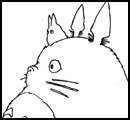The moveable-type-blocks chapter may not be the most complex (or it may be; that's like asking which Shakespeare play is the best), but it is a good example of the ceremony's style. In a large rectangle, 897 of these blocks move up and down in a complicated series. They can be in more than just two positions--it looks like low, high, and mid, although there may be even more. In a sort-of analog computer screen, the blocks spell out Chinese characters, form the Great Wall, or just animate waves and geometric patterns. This is a task only a computer could control. Each block has its own motor controlled by a CPU, right? I would still believe that if 897 people didn't pop out at the end, waving cheerfully.
(This gets a 4 rather than a 5 only because of the lengthy Parade of Nations. It is part of the ceremony.)


No comments:
Post a Comment